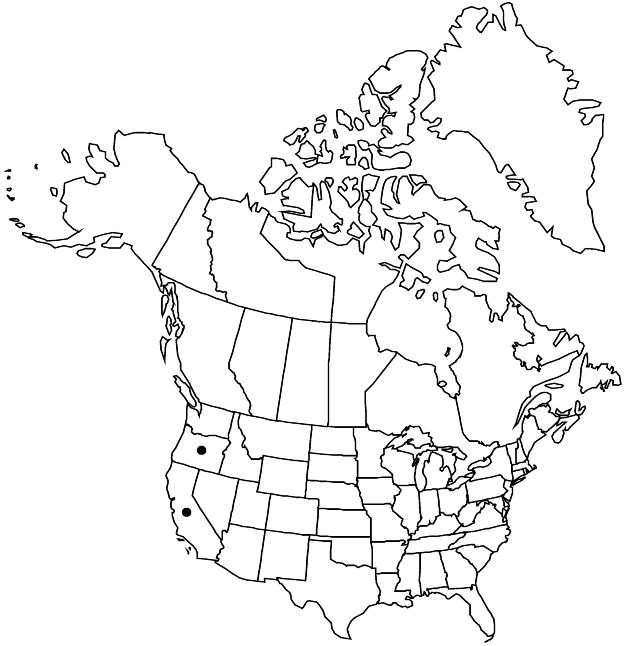Difference between revisions of "Horkelia tridentata var. flavescens"
Novon 17: 320. 2007.
FNA>Volume Importer |
imported>Volume Importer |
||
| (3 intermediate revisions by 2 users not shown) | |||
| Line 15: | Line 15: | ||
|name=Horkelia flavescens | |name=Horkelia flavescens | ||
|authority=Rydberg | |authority=Rydberg | ||
| + | |rank=species | ||
|publication_title=Monogr. N. Amer. Potentilleae, | |publication_title=Monogr. N. Amer. Potentilleae, | ||
|publication_place=138, plate 75. 1898 | |publication_place=138, plate 75. 1898 | ||
| Line 21: | Line 22: | ||
|name=H. tridentata subsp. flavescens | |name=H. tridentata subsp. flavescens | ||
|authority=(Rydberg) D. D. Keck | |authority=(Rydberg) D. D. Keck | ||
| + | |rank=subspecies | ||
}} {{Treatment/ID/Synonym | }} {{Treatment/ID/Synonym | ||
|name=Potentilla tilingii var. flavescens | |name=Potentilla tilingii var. flavescens | ||
|authority=(Rydberg) J. T. Howell | |authority=(Rydberg) J. T. Howell | ||
| + | |rank=variety | ||
}} | }} | ||
|hierarchy=Rosaceae;Rosaceae subfam. Rosoideae;Rosaceae tribe Potentilleae;Horkelia;Horkelia sect. Tridentatae;Horkelia tridentata;Horkelia tridentata var. flavescens | |hierarchy=Rosaceae;Rosaceae subfam. Rosoideae;Rosaceae tribe Potentilleae;Horkelia;Horkelia sect. Tridentatae;Horkelia tridentata;Horkelia tridentata var. flavescens | ||
| Line 39: | Line 42: | ||
|elevation=700–2000 m | |elevation=700–2000 m | ||
|distribution=Calif.;Oreg. | |distribution=Calif.;Oreg. | ||
| − | |discussion=<p>Variety flavescens occurs primarily in the mountains of northwestern California, from Mendocino to Siskiyou counties. A single collection is confirmed from Curry County, Oregon (Bear Camp Trail, Leach 4554, OSC); other collections from Curry and Josephine counties may be hybrids between this variety and <i>Horkelia congesta </i>var.<i> nemorosa</i>. A second cluster of populations occurs in central Plumas and adjacent Lassen counties, California, and historic collections are known from near Truckee on the border of <i>Nevada</i> and Placer counties, California. D. D. Keck (1938) suggested that this bicentric distribution may have resulted from the independent coalescence of the diagnostic characteristics of < | + | |discussion=<p>Variety flavescens occurs primarily in the mountains of northwestern California, from Mendocino to Siskiyou counties. A single collection is confirmed from Curry County, Oregon (Bear Camp Trail, Leach 4554, OSC); other collections from Curry and Josephine counties may be hybrids between this variety and <i>Horkelia congesta </i>var.<i> nemorosa</i>. A second cluster of populations occurs in central Plumas and adjacent Lassen counties, California, and historic collections are known from near Truckee on the border of <i>Nevada</i> and Placer counties, California. D. D. Keck (1938) suggested that this bicentric distribution may have resulted from the independent coalescence of the diagnostic characteristics of <i></i>var.<i> flavescens</i>. The locality of a collection purportedly from Washoe County, <i>Nevada</i> (80 miles north of Reno, Brooks s.n., RENO) needs to be confirmed.</p> |
|tables= | |tables= | ||
|references= | |references= | ||
| Line 48: | Line 51: | ||
-->{{#Taxon: | -->{{#Taxon: | ||
name=Horkelia tridentata var. flavescens | name=Horkelia tridentata var. flavescens | ||
| − | |||
|authority=(Rydberg) Ertter & Reveal | |authority=(Rydberg) Ertter & Reveal | ||
|rank=variety | |rank=variety | ||
| Line 63: | Line 65: | ||
|publication year=2007 | |publication year=2007 | ||
|special status=Endemic | |special status=Endemic | ||
| − | |source xml=https:// | + | |source xml=https://bitbucket.org/aafc-mbb/fna-data-curation/src/2e0870ddd59836b60bcf96646a41e87ea5a5943a/coarse_grained_fna_xml/V9/V9_431.xml |
|subfamily=Rosaceae subfam. Rosoideae | |subfamily=Rosaceae subfam. Rosoideae | ||
|tribe=Rosaceae tribe Potentilleae | |tribe=Rosaceae tribe Potentilleae | ||
Latest revision as of 23:56, 5 November 2020
Stems ± decumbent, 0.5–2.5(–4.5) dm. Inflorescences composed of usually 1 3–25-flowered ± corymbiform cluster. Flowers 6–10 mm diam.; hypanthium 2.5–5 mm diam., interior pilose (except in some North Coast Ranges populations); petals ± broadly oblanceolate, (1–)1.5–3(–4) × 0.5–1.5 mm, often shorter than sepals, apex obtuse to rounded or mucronate; filaments 1–2 × 0.2–0.4(–0.8) mm, anthers 0.3–0.5 mm; styles 1.5–2.5 mm. Achenes 2–2.5 mm, strongly rugose.
Phenology: Flowering summer.
Habitat: Open areas, primarily in conifer woodlands, often on serpentine soil
Elevation: 700–2000 m
Discussion
Variety flavescens occurs primarily in the mountains of northwestern California, from Mendocino to Siskiyou counties. A single collection is confirmed from Curry County, Oregon (Bear Camp Trail, Leach 4554, OSC); other collections from Curry and Josephine counties may be hybrids between this variety and Horkelia congesta var. nemorosa. A second cluster of populations occurs in central Plumas and adjacent Lassen counties, California, and historic collections are known from near Truckee on the border of Nevada and Placer counties, California. D. D. Keck (1938) suggested that this bicentric distribution may have resulted from the independent coalescence of the diagnostic characteristics of var. flavescens. The locality of a collection purportedly from Washoe County, Nevada (80 miles north of Reno, Brooks s.n., RENO) needs to be confirmed.
Selected References
None.
